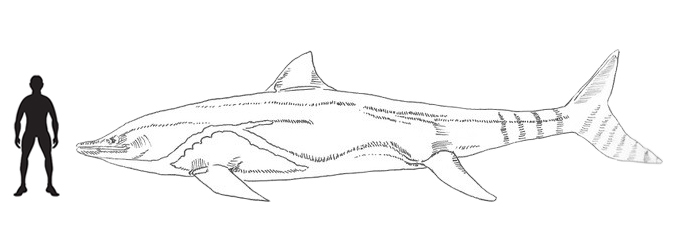Drawings of dinosaurs and other prehistoric animals either done by team members or sent into Everything Dinosaur.
An Exclusive Beelzebufo Prehistoric Frog Drawing
We have commissioned a Beelzebufo ampinga drawing as we await the arrival of the Rebor Beelzebufo figures. The drawing will be used in the Everything Dinosaur Beelzebufo fact sheet. Fact sheets will be sent out free with the new Rebor Beelzebufo figures (Goo Goo Doll and Little Feet models).

Everything Dinosaur has commissioned an illustration of Beelzebufo ampinga in preparation of the arrival of the Rebor articulated Beelzebufo figures. Picture credit: Everything Dinosaur.
Picture credit: Everything Dinosaur
Fossils are known from Upper Cretaceous strata on the island of Madagascar. When first described in 2008 (Evans, Jones and Krause), a body length of over forty centimetres was proposed. The size of this prehistoric amphibian remains uncertain. It had a body length of at least twenty-five centimetres. The largest fossil specimen known nearly attains this size and the unfused nature of its fossilised bones indicate that it probably grew much larger.
To read Everything Dinosaur’s article from 2008 announcing the discovery of this giant prehistoric frog: A Prehistoric Frog That Could Jump Continents.
A Beelzebufo ampinga Drawing
The drawing shows this prehistoric frog in a lateral view with its huge, cavernous mouth closed. The Rebor figures are articulated and there are two different figures to choose from. One figure, (Little Feet) has extensions of skin over its eyes, a nod towards a suggested phylogenetic relationship to the Ceratophyrinae, termed the “horned frogs”. However, our drawing is based upon “Goo Goo Doll”.
The phylogenetic affinity of Beelzebufo remains controversial. Similarities in skull bones between it and extant “horned frogs” might be a result of convergent evolution.
The range of Rebor models and figures available: Rebor Figures and Models.
Mike from Everything Dinosaur commented:
“We create fact sheets as we want to help educate and inform. Each fact sheet provides some basic information about the prehistoric animal the model represents. By commissioning drawings, we can produce a scale drawing so that readers can see the approximate size of the creature. Our Beelzebufo ampinga drawing captures the stocky nature of this prehistoric frog. Its mouth was huge, and it has been speculated that it could attack and swallow baby dinosaurs.”
The multi-award-winning Everything Dinosaur website: Prehistoric Animal Figures.















